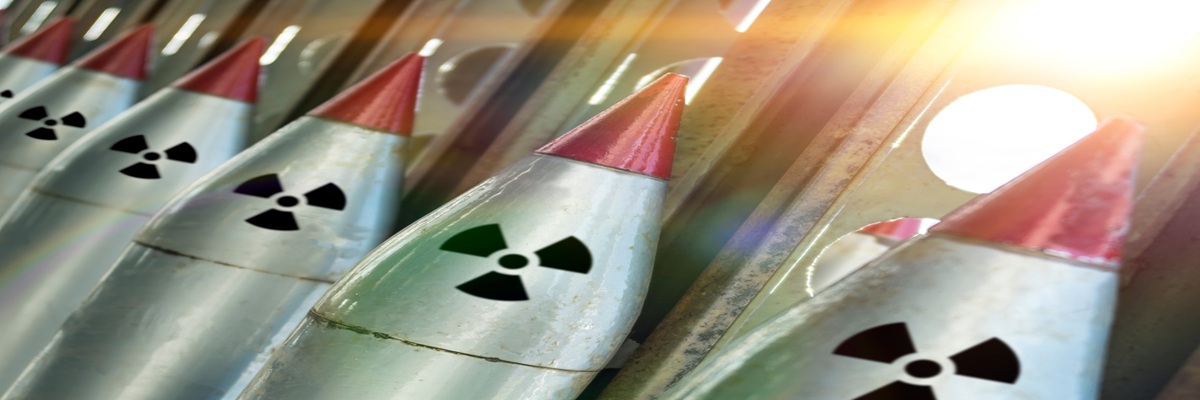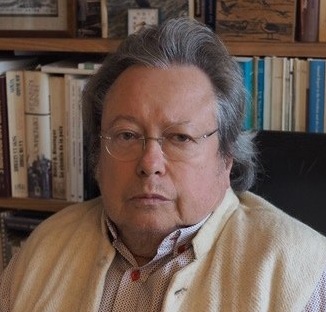Defense & Security
What kind of European nuclear strategy?

Image Source : Shutterstock
Subscribe to our weekly newsletters for free
If you want to subscribe to World & New World Newsletter, please enter
your e-mail
Defense & Security

Image Source : Shutterstock
First Published in: Mar.12,2025
Apr.07, 2025
Whether French or European, the strategy of nuclear deterrence is governed by one absolute rule: it is not an end in itself, but means to an end, so that we cannot put the atomic cart before the political horse.
To avoid getting bogged down for the umpteenth time in futile discussions about a European nuclear deterrent, let's recall the fundamental principles of this strategy.
Deterrence is a mode of operation with a negative goal as old as war itself. Aimed at preventing an adversary's offensive intentions, it has been used with varying degrees of success due to its random nature. It is based on the calculation of probabilities. Usually, if an aggressor takes the risk of transgressing deterrence based on conventional forces and its venture goes wrong, the aggressor has gambled and lost, suffering at worst the humiliation of defeat. With nuclear weapons, deterrence now takes on a whole new dimension, since the probability of nuclear retaliation entails the risk of an exorbitant loss, said to be unbearable, exceeding the value of what is at stake.
The strategy of nuclear deterrence is not peace. It cannot prevent limited regional conflicts or suppress terrorist action. It can only be applied in the event of a massive attack of any kind against the vital interests of the country under attack.
This “perimeter of vitality” does not have to be precisely defined, but is left to the discretion of the Head of State, so as to create uncertainty for the would-be aggressor. The strategy of nuclear deterrence is based on five identified principles, theorized in France by Generals Gallois [1] and Poirier. [2]
Principle of credibility: nuclear deterrence requires the creation and demonstration of technical capabilities. This was the role of the tests suspended indefinitely in 1994 and prohibited by treaty (CTBT).
Principle of permanence: the SDN is ensured by the Head of State, who is the sole decision-maker, with 24-hour access to electronic codes and means of transmission to strategic air forces on standby and submarines on patrol.
Principle of uncertainty: “the deterrent effect results from the combination of certainty and uncertainty in the mental field of a would-be aggressor: certainty as to the existence of an unacceptable risk... uncertainty as to the exact conditions of application of the model in the event of the outbreak of hostilities.”
Principle of sufficiency: for a medium-sized power like France, in terms of quantity and quality, neither too much nor too sophisticated.
During the Cold War, this was known as “deterrence of the weak by the strong” (the strong being the Soviet Union, which French leaders wisely never named explicitly). To avoid embarking on a ruinous arms race, two conditions need to be met:
A. An invulnerable nuclear force capable of retaliating in the event of aggression (nuclear-powered ballistic missile submarines - SNLE - are permanently undetectable). It is essential to provide redundancy in the event of human or technical failure.
B. Ability to penetrate enemy defenses. There is no such thing as 100% interception. The damage remains tolerable if the explosive charges are conventional, but if they are nuclear, the problem changes completely. An SSBN salvo sends 96 charges that can “vitrify” potentially as many targets. No defense system would be able to intercept them, no matter how much progress is made. All the more so as these warheads are surrounded by decoys, maneuverable (change of trajectory) and stealthy (low radar signature). This lasting superiority of aggression over protection means that the SDN is the only response.
Principle of proportionality: the amount of “unbearable” destruction is related to the value of what is at stake. In this case, is the invasion and conquest of France worth the annihilation of one or more of the aggressor's vital centers?
So what should be the target? “Anticité” (men) or antiforces (weapons)? Progress in precision has made it possible to target smaller areas with greater precision. The official line is that France is no longer targeting cities, but rather the command centers of nuclear forces and political decision-making centers. However, such targets are rarely located in the heart of deserts, but have the bad taste of being buried deep in the middle of densely populated areas.
The creation of a European strategic nuclear deterrent will therefore have to go along with all these principles. How and with what facilities? The stakes for the aggressor would change dimension. From the vital interests of France alone, we would move on to those of all the member states of the European Union, or at the very least, of those who would agree to join us.
The calculation of proportionality would be affected, with ipso facto repercussions on the principle of sufficiency. Given its flexibility and visibility, should the air component be expanded? Should the number of nuclear weapons be increased? Should territorial positioning be extended, where and how far?
Could France extend its nuclear deterrent to cover the interests of its European partners? The nuclear “umbrella” declared by U.S. leaders since Kennedy's Defense Secretary McNamara has often been the subject of skepticism about its credibility, starting with General de Gaulle. Donald Trump openly exposes the eminently selfish nature of nuclear weapons. Who can still believe today that this President and his successors would sacrifice New York for Warsaw, Berlin or Paris? A fortiori, are the citizens of the countries of Europe prepared to make their existence dependent on the decision of the French President alone? Who could believe that he would sacrifice Paris for Tallinn? In truth, if the allies (European and Asian) thought they could rely on the commitment of the United States, it was because of the growing strength of American conventional forces capable of effectively opposing non-nuclear aggression.
Any comparison with the USA is therefore absurd. Together, do the EU states have 11 aircraft carriers? 14 strategic nuclear submarines? Do their navies lock up world trade routes? Do they control Space? The little European frog won't reach the enormity of the American ox. But would this be necessary if their governments were to make an objective assessment of the real threat, free from ideological prejudices and corporatist interests?
Let's move on to the crux of deterrence: the cost of “burden-sharing”, NATO's constant worry. Are states like Germany, Italy, Spain and Poland prepared to pay for the construction of a so-called European nuclear deterrent, without having access to the ultimate decision?
Money is also time.
A single multi-state nuclear strategy cannot be improvised overnight.
Are we forgetting that some EU members do not perceive Russia as a threat; that others, like Austria, are leaders in favor of a ban on nuclear weapons? Last but not least, where would the post-Brexit United Kingdom fit into this scheme?
Even if the will is strong and widely shared, the political, financial and technical development of a nuclear deterrent involving a number of European states will take time, on the order of several years. What will the Russian Federation look like, and how will US-China competition have evolved in five to ten years' time?
Peacetime declarations (Franco-German, Franco-British) often express only grand illusions or pious hopes that cost nothing. The true ally is seen at the foot of the war, when egoistic realism reclaims its icy rights. Yet for the past twenty years, in every crisis (financial, migratory, health - Covid- and military - Ukraine-), the EU has shown itself to be unprepared, slow to react and, above all, divided. The creation of a credible NED is therefore in flagrant contradiction with the very existence of the EU in its current form and operation.
We need to return to the foundations of the Community project.
Those countries of Europe which share a rigorously identical conception of their global situation, to the point of merging their vital interests, will have to agree on a lasting political framework defining common goals, in a sort of Charter; to equip themselves accordingly with a military alliance such as a European Defense Society for as long as deemed necessary; to guarantee themselves by a European Intelligence Community.
Whether French or European, the strategy of nuclear deterrence is subject to one absolute rule: it is not an end in itself, but means to an end, so that we cannot put the atomic cart before the political horse.
Copyrights for his picture : Copyright Mars 2025-Géré/Diploweb.com Marie-France Géré
First published in :

François Géré is a specialist and holds a PhD in history (Paris 3 Sorbonne nouvelle). He is the president of the Cercle des amis du général Lucien Poirier (2019 - ). François Géré introduced Général Lucien Poirier's posthumous work, “Éléments de stratégique”. published by Economica, Ministère des Armées, 2023. Moreover, he recorded with Lars Wedin, L'Homme, la Politique et la Guerre, ed. Nuvis, 2018. and published, “La pensée stratégique française contemporaine”, Paris, Economica, 2017.
Unlock articles by signing up or logging in.
Become a member for unrestricted reading!